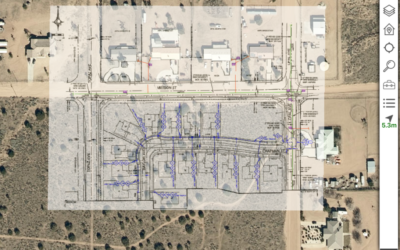The utility industry is under tremendous transformation.
Modern utility challenges
In 2021, more companies will work toward a clean energy future, with many setting the ambitious goal of zero carbon emissions by 2050 using increased solar, wind, and energy storage investment. Moreover, the emergence of “prosumers,” extreme weather events, increased threat of cyberattacks, aging assets, and evolving customer expectations are converging to impact the industry. Many utilities invest in IT modernization, implementing SAP ERP software, Salesforce, and other systems that provide robust digital capabilities to adapt to these challenges. Indeed, according to Gartner’s Energy and Utilities in the Digital Age report, by 2025, utility spending on advanced analytics will double, 50% of enterprises will have developed artificial intelligence (AI), and 50% will have progressed in their use of the Internet of Things (IoT). By launching digital transformation initiatives, utilities can better manage assets and operations for meeting any business objective. A modern geographic information system (GIS) can play a crucial role. It is a strategic enabling technology that connects multiple aspects of a utility business. While legacy GIS resides at the departmental level and lacks integration with other systems, modern GIS systems seamlessly fit within the enterprise. Moreover, the latest GIS solutions, such as Esri’s ArcGIS, provide a model-based approach and sophisticated tools that accurately manage networks, improving performance, service, and reliability. Utility business challenges addressed through modernization:
- — Sustainability requirements
- — Consumer demands
- — Infrastructure and asset needs
- — Increased competition
- — Shifting regulatory requirements
Modern GIS
For utilities undergoing significant digital transformation, which includes changes in technology, processes, and behaviors, the overarching IT strategy should move to a modern GIS. It connects systems to clarify spatial behaviors and relationships for optimal asset management. It augments work and asset management applications. And it enables people to monitor the status of utility networks, identify events that may affect services, and perform proactive maintenance. Modern GIS is purpose-built to improve how utilities perform asset management, operations, compliance, engineering, customer care, and field services. It integrates and fuels previously siloed systems like advanced distribution management systems (ADMS), building information management (BIM) systems, supervisory control and data acquisition (SCADA), as well as enterprise resource planning (ERP) applications like work management, asset management, and customer financials. Through these enterprise integrations, several paradigm-shifting improvements occur. Modern GIS can consume and publish the integrated pieces and parts of the network and utility system in web services. It also can provide simulations that supply what-if-scenarios, predictive analytics, and more. Thus, it helps manage the network based on real-world attributes, whether electric, gas, or water systems. Downstream tracing and analysis quickly identify equipment, assets, and customers out of service. And predictive analytics proactively update and maintain infrastructure and mitigate potential disruption. When an organization moves from departmental GIS to a modern, spatially-enabled enterprise, it facilitates instant access to maps and related information. It georeferences every piece of business information, relating it to geography on a map. Utilities can take data from traditional GIS and combine it with CAD, imagery, and live data feeds to pull them into a seamless view that incorporates location analytics and geospatial data into decision-making and situational awareness. Advanced analysis and tracing help assess the impact of storms, outages, or equipment failure. It improves monitoring networks from production to the customer. High-powered data 2D and 3D visualizations assists with development and editing equipment. The elimination of paper-based processes and legacy systems improves the quality and timeliness of the information used. Users can access and see multiple projects in different phases, including planning, engineering, design, construction, maintenance, and management, as well as repair and restoration. Elements of a modern GIS include:
- Model-centric network
- Real-time visualization, analytics, and reporting
- Integration with systems
- Removal of silos and manual processes
- Increased data accuracy, timeliness, and completeness
The business value
For many utilities, the best approach to spatially enable the enterprise through GIS integration and modernization involves migrating to the latest version of the Esri ArcGIS and the ArcGIS Utility Network (UN). Utilities, leveraging a comprehensive framework, can more accurately model network behavior in conjunction with the traditional map analysis. In addition, it supplies a complete data model that’s easy to edit. It delivers full network connectivity. Plus, it scales from small to large utility networks. With ArcGIS UN, utilities can develop an authoritative geospatial digital twin to manage their grid. The digital twin offers a more accurate version of the network that includes behavior and physical characteristics. In addition, live data feeds such as weather and traffic can be integrated to analyze real-world network relationships with biological systems. Organizations can use geospatial tools to exploit the locational aspect of their data, gleaning insights that might otherwise be missed relying on tabular data and traditional tools alone. As a result, they gain a complete operational picture that improves communication, collaboration, and coordination. The business value reaches every corner of the operation, improving how staff perform daily work and serve customers.
- — Effective network management — Users can perform accurate analysis for maintenance and capital improvement programs, looking at risks, resources, and costs. Using location, staff can discover patterns and trends that simple reporting won’t detect. In addition, they can access real-time information from mobile devices in the field.
- — Better business resilience — Utilities can proactively plan, mitigate, manage, and enhance operations so decision-makers can act using location intelligence. Visualizations of network and performance can help with mitigation planning and preparedness, as well as reporting.
- — Increased safety — Utilities can share maps and data to safeguard people, property, and the environment. They can accurately identify aging assets and potential network disruption to take corrective action before an incident occurs. They can also meet new government mandates.
- — New Business Models — Companies can use spatial analytics, models, and data to identify potential new business, such as distributed energy resources (DERs) and eMobility (electric vehicles, or EVs), as well as non-commodity-based products and services.
- — Improved customer care — Modern GIS enhances customer experiences and increases satisfaction through faster service delivery, shorter outage times, and greater community communication and engagement. GIS web apps give service reps the map-based interface to handle calls, answering questions about disruptions, repairs, construction timelines, and more.
Digital transformation offers the promise to meet the challenges of today – and the future of utilities – using enterprise technology and an abundance of available data. The business value comes from breaking down siloes and integrating systems and data for a complete data-driven picture. Modern GIS fits seamlessly into the IT ecosystem. It provides powerful tools and a model-centric approach that more accurately reflects the utility network, whether for electric, gas, or water/wastewater.
Geospatial for everyone
As more utility businesses modernize and transform how they manage their assets and serve their customers in 2021 and beyond, GIS departments will need to make a critical choice — continue to support traditional geospatial software or transition to next-generation solutions. Companies that invest in modern GIS as part of a larger digital transformation will gain a significant return on value and ensure long-term business success. The key involves understanding how to connect the software with other enterprise systems and embed functionality throughout the organization, so more people do their work better using geospatial. Contact Locana today to learn more about how you can achieve a greater return on value with a modern GIS as part of your digital transformation.


